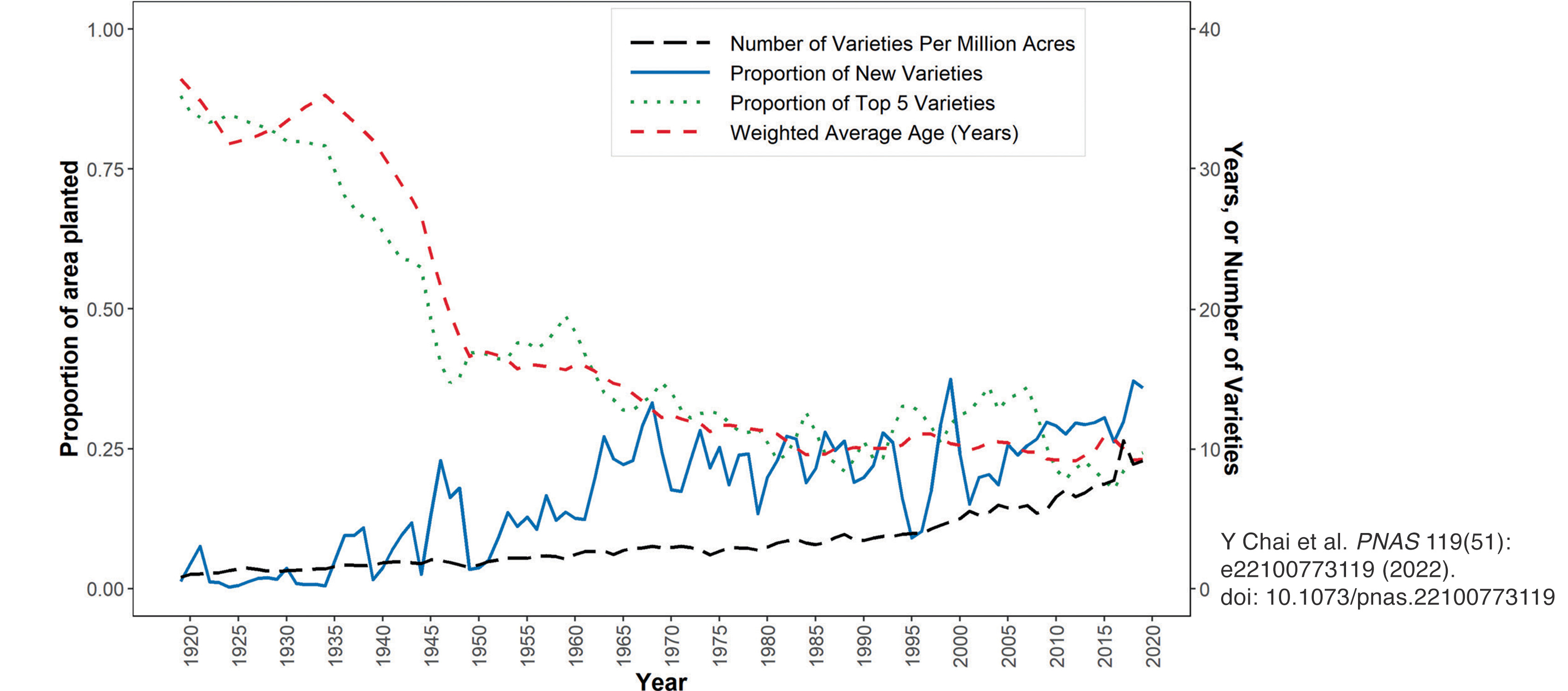A concern about modern agricultural practices is that breeders, in search of crops with higher yields, are reducing diversity in those plants. Battling biodiversity loss is a priority for many international organizations, including the United Nations.
In a paper recently published in the journal Proceedings of the National Academy of Sciences of the USA, University of Minnesota researchers Dr. Yuan Chai (Applied Economics), Professor Philip Pardey (Applied Economics; MSI PI), and Dr. Kevin Silverstein (Bioinformatics, MSI) used diversity metrics to study how varietal diversity in the U.S. wheat crop has changed over the past 100 years. Their results showed that using scientifically selected varieties has increased both crop production and crop diversity. This win-win situation is good news for national and international agencies seeking to improve global food security by increasing crop yields while at the same time protecting biodiversity. The paper can be found on the PNAS website: Yuan Chai, Philip Pardey, Kevin Silverstein. Scientific selection: A century of increasing crop varietal diversity in U.S. wheat. Proceedings of the National Academy of Sciences of the USA 119(51): e22100773119 (2022). doi: 10.1073/pnas.22100773119.
A Research Brief about this paper also appears on the University of Minnesota website: 100 years of data shows modern wheat varieties are a productivity and biodiversity win-win.
Dr. Chai, Professor Pardey, and Dr. Silverstein are members of GEMS Informatics, which supported this research. GEMS Informatics is a joint initiative led by the College of Food, Agricultural and Natural Resource Sciences and the Research Computing group in the Office of the VP for Research at the University of Minnesota. They produce and enable the creation of research-ready scientific data, and turn that data into actionable information for farmers, scientists, governments, or companies. MSI, which is part of Research Computing, provides computing resources for GEMS Informatics research.
Image description: Phylogenetically blind measures of U.S. wheat diversity, 1919 to 2019. Image and description, Y. Chai et al. PNAS 119(51): e22100773119 (2022). doi: 10.1073/pnas.22100773119.
